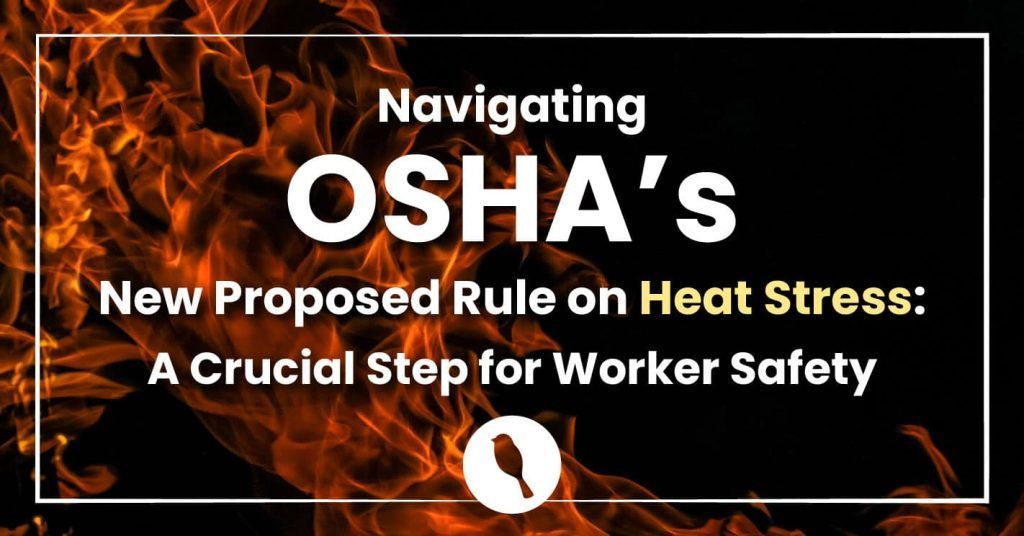Navigating OSHA’s New Proposed Rule on Heat Stress: A Crucial Step for Worker Safety

Navigating OSHA’s New Proposed Rule on Heat Stress: A Crucial Step for Worker Safety
As summer temperatures soar and heat waves become increasingly common, the importance of safeguarding workers from heat stress cannot be overstated. Heat is the leading cause of death among hazardous weather conditions in the U.S., yet its risks are often overlooked in workplace safety discussions. To address this critical issue, the Occupational Safety and Health Administration (OSHA) has recently proposed a new rule aimed at combating heat-related injuries and illnesses in the workplace. Here’s a closer look at what this proposed rule entails, why it’s needed, and how it could impact both workers and employers.
The Heat Problem: A Stark Reality
Heat-related illnesses and fatalities have long been a silent but deadly hazard in various industries. According to the Bureau of Labor Statistics, between 2011 and 2022, 479 U.S. workers lost their lives due to exposure to environmental heat, translating to an average of 40 fatalities per year. Additionally, from 2011 to 2020, there were approximately 33,890 work-related heat injuries and illnesses that led to days away from work, averaging 3,389 per year*. However, these figures likely represent a fraction of the true impact, as many cases of heat stress go unreported or are misclassified.
The Proposed Rule: What You Need to Know
In response to these concerning statistics, OSHA has issued a Notice of Proposed Rulemaking (NPRM) for Heat Injury and Illness Prevention. This proposed rule represents a significant leap toward establishing a federal standard to protect workers from hazardous heat. Here are the key components of the proposal:
Scope and Coverage: The new standard would apply to employers in all sectors under OSHA’s jurisdiction, including general industry, construction, maritime, and agriculture. This broad application ensures that workers in a variety of environments are protected, whether they work indoors or outdoors.
Heat Hazard Evaluation and Control: Employers would be required to develop and implement a comprehensive plan to evaluate and control heat hazards. This includes identifying heat sources, assessing the risk of heat stress, and implementing measures to mitigate these risks.
Employer Obligations: The proposed rule clarifies the responsibilities of employers to protect their employees from hazardous heat. This includes providing access to cool water, rest breaks, and appropriate training on recognizing and responding to heat stress symptoms.
Protecting Vulnerable Workers: The proposal takes into account the heightened risks faced by certain groups of workers, such as pregnant employees and workers of color who are disproportionately exposed to hazardous heat conditions. This focus on vulnerable populations is crucial for ensuring equitable protection across the workforce.
Public Participation: OSHA encourages public input on the proposed rule. This is a valuable opportunity for stakeholders to share their insights and help shape a final rule that is both effective and practical.
Why This Rule Matters
The introduction of a federal heat standard is more than just a regulatory update; it’s a crucial step toward preventing unnecessary suffering and loss of life. Excessive heat in the workplace can lead to serious health issues such as heat stroke, heat exhaustion, and dehydration, which can be fatal if not addressed promptly. By setting clear standards and requirements, OSHA aims to reduce the number of heat-related incidents and ensure that workers have access to the protection and support they need.
Next Steps: What Employers and Workers Should Do
As the proposed rule moves through the regulatory process, employers should begin preparing by:
- Reviewing their current heat safety practices and identifying areas for improvement.
- Developing or updating their heat stress prevention plans in anticipation of the new requirements.
- Ensuring that all employees receive training on heat-related hazards and response measures.
- For workers, staying informed about the proposed rule and participating in the public comment process can make a difference. Your feedback will help OSHA refine the rule to better meet the needs of the workforce and improve overall safety.
OSHA’s proposed rule on heat stress marks a significant advancement in worker safety and health. By addressing the dangers of excessive heat, this rule aims to prevent tragic incidents and promote a safer working environment for all. As we await the final version of the rule, both employers and employees have a role to play in advocating for and implementing effective heat stress prevention measures. Together, we can work toward a future where no worker has to suffer from the preventable dangers of heat exposure.
Stay tuned for more updates as the proposed rule progresses, and make sure to participate in the public comment period to help shape a safer, healthier, and cooler workplace for everyone.
*https://www.osha.gov/heat-exposure/rulemaking


